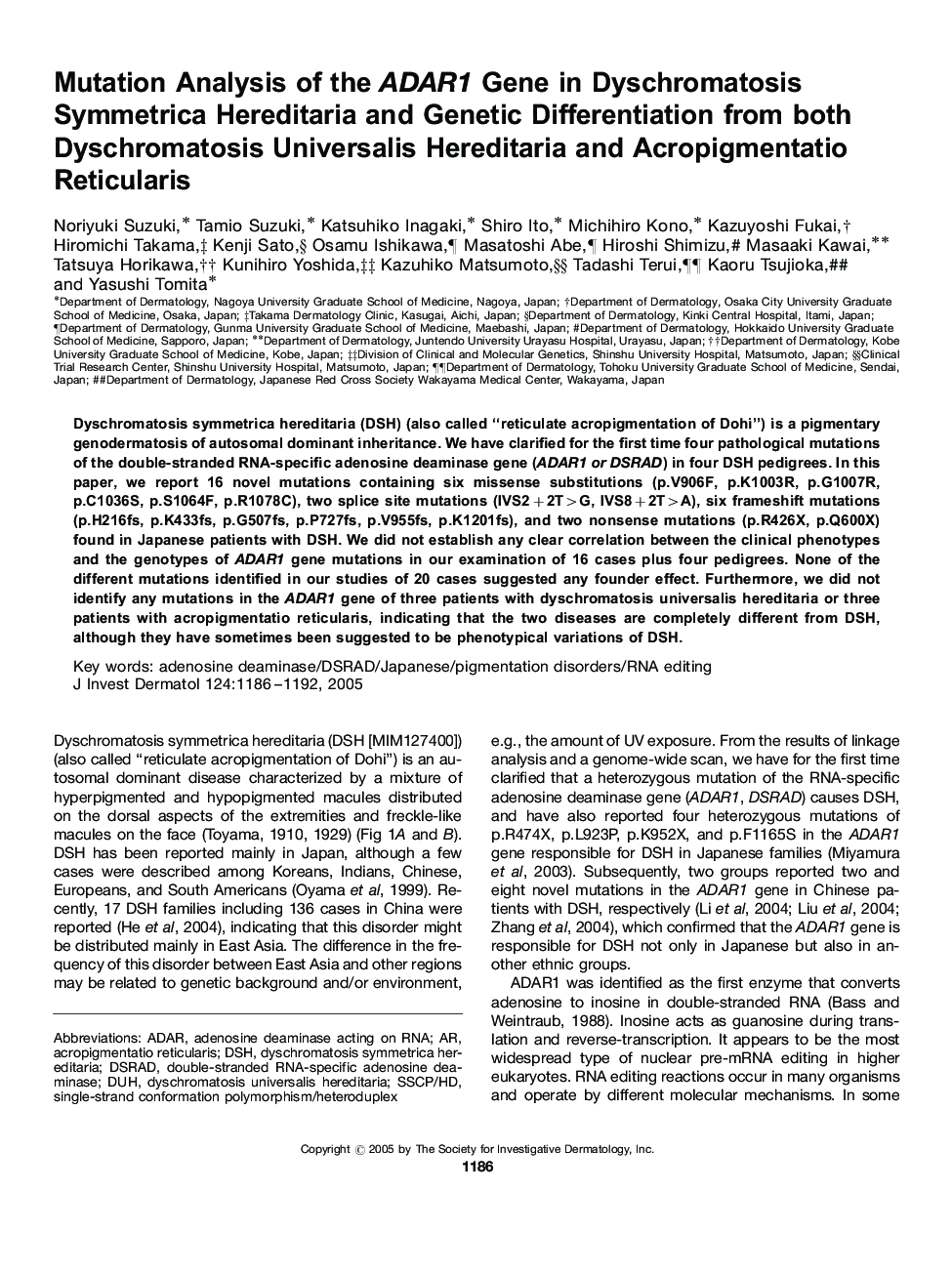| Article ID | Journal | Published Year | Pages | File Type |
|---|---|---|---|---|
| 9230150 | Journal of Investigative Dermatology | 2005 | 7 Pages |
Abstract
Dyschromatosis symmetrica hereditaria (DSH) (also called “reticulate acropigmentation of Dohi”) is a pigmentary genodermatosis of autosomal dominant inheritance. We have clarified for the first time four pathological mutations of the double-stranded RNA-specific adenosine deaminase gene (ADAR1 or DSRAD) in four DSH pedigrees. In this paper, we report 16 novel mutations containing six missense substitutions (p.V906F, p.K1003R, p.G1007R, p.C1036S, p.S1064F, p.R1078C), two splice site mutations (IVS2+2T>G, IVS8+2T>A), six frameshift mutations (p.H216fs, p.K433fs, p.G507fs, p.P727fs, p.V955fs, p.K1201fs), and two nonsense mutations (p.R426X, p.Q600X) found in Japanese patients with DSH. We did not establish any clear correlation between the clinical phenotypes and the genotypes of ADAR1 gene mutations in our examination of 16 cases plus four pedigrees. None of the different mutations identified in our studies of 20 cases suggested any founder effect. Furthermore, we did not identify any mutations in the ADAR1 gene of three patients with dyschromatosis universalis hereditaria or three patients with acropigmentatio reticularis, indicating that the two diseases are completely different from DSH, although they have sometimes been suggested to be phenotypical variations of DSH.
Related Topics
Health Sciences
Medicine and Dentistry
Dermatology
Authors
Noriyuki Suzuki, Tamio Suzuki, Katsuhiko Inagaki, Shiro Ito, Michihiro Kono, Kazuyoshi Fukai, Hiromichi Takama, Kenji Sato, Osamu Ishikawa, Masatoshi Abe, Hiroshi Shimizu, Masaaki Kawai, Tatsuya Horikawa, Kunihiro Yoshida, Kazuhiko Matsumoto,
